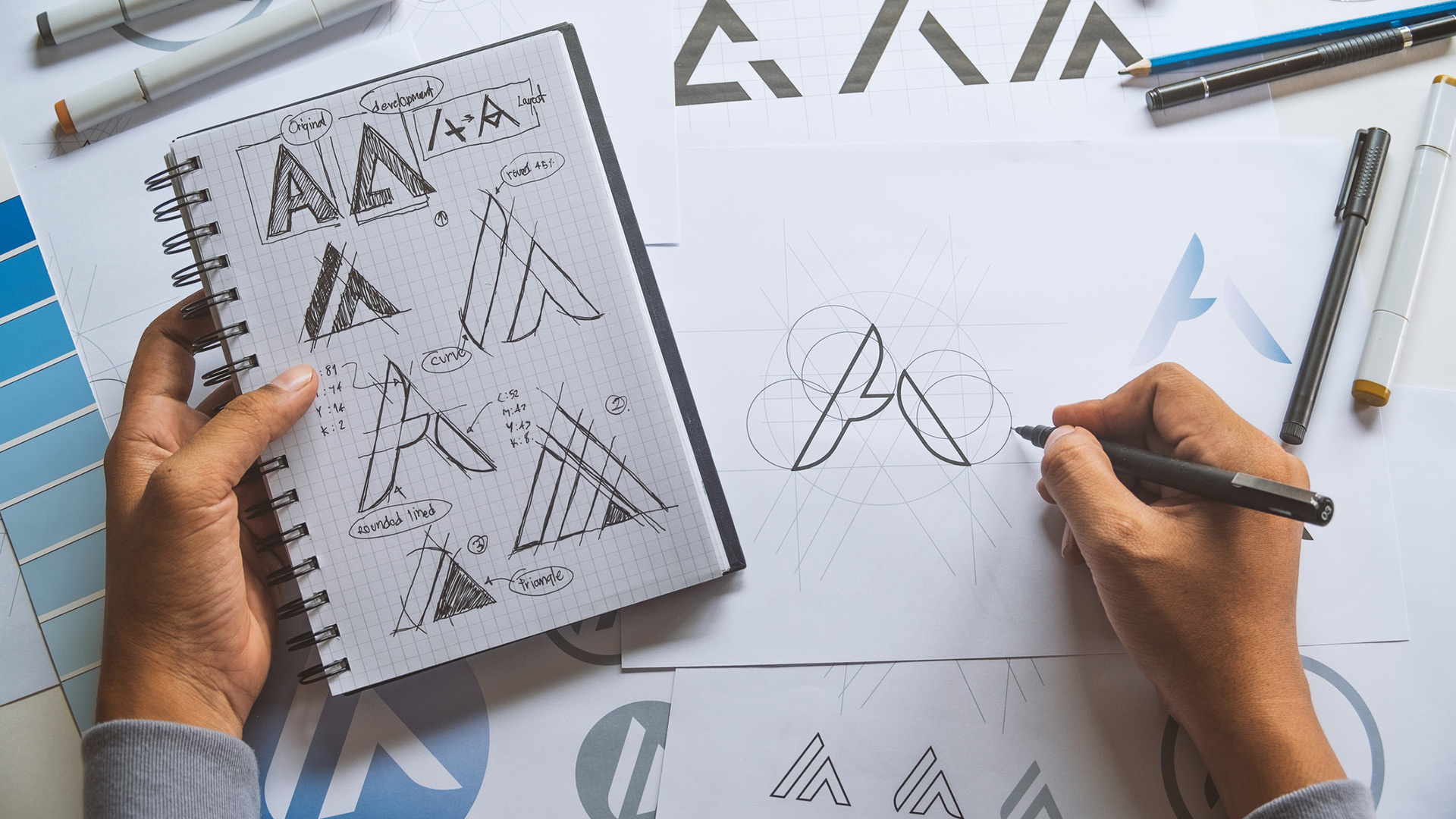So you need a logo.
You have your big idea, you have a name, you have a business plan, and you are ready to move forward with what will hopefully be your retirement plan.
BUT, there’s a problem, you don’t have awareness. You don’t have a website for anyone to find information about you, and first and foremost, you don’t have a logo to identify who you are. This quick visual representation of your business can trigger someone to want to know more, or if done wrong, completely turn them away.
What is a logo?
First let’s get this out of the way: Your logo is NOT your “brand”. While a very important part of your brand, a logo is simply one piece of your brand. What goes into a brand is a different topic.
Your logo is a quick identifier for your company. In most cases, effective logos create quick recognition at a glance about what a company is, the services they provide, and create a “feel” for their target audience.
5 points to consider when when working with a designer to create a logo:
1. What’s your style?
One of the first things to consider when working with a logo designer is what style do you want? More importantly, what style will resonate with your audience? They are the ones buying your product or service. While this may be your company, your look also has to appeal to them. Does your designer possess the ability to produce the style you are looking for? Be sure you see samples of the designer’s work that fit the look you are going for before hiring them.
2. Tell your story
A logo designer should be asking you questions about your business. They should be getting to know you, and more importantly, getting to know your audience. What does your audience like? What will get them to trust you and the services you are offering? What look and feel will resonate with them? Should you be whimsical and ornate? Secure and trustworthy? Having a story helps develop and define the direction of your logo.

3. Icons, monograms, and typography
Should your logo have an icon or can your company be recognizable simply through text?
Icon and/or monograms create a quick identifier for a company without seeing the full name. The drawback is that they take time to establish in the marketplace to stand on their own. Companies like Apple and Nike didn’t start as the instantly recognizable icons from the start. It took years of recognition and customers interacting with them to have that power.
In terms of typography, just like an icon or monogram, the font choices for your logo help set the tone for how a customer feels about your business. While company names may start with what appears to be a font choice, we believe that a good logo can go to great by modifying the font of a logo. This makes it truly “ownable” by the client. In some cases, we may even custom create every letter in the logo to make it unique. No one should be able to go into Microsoft Word, type in your name, select a font, and lay it directly over top of your logo. The typography of your logo should be unique to your brand.
4. Colors
Colors create moods and trigger emotions, so be careful on color selection for your logos. A red logo for a mental health facility could be in dangerous territory, since red is often associated with strength, power, energy and danger. When it gets to that point in the process of the design, your designer should also be asking you if there are any colors they should avoid because you don’t like them.
I say “when it gets to that point in the process” because if your designer does not start with initial concepts of your logo in black and white, they are doing it WRONG! As stated earlier, color creates moods and triggers emotions. When we show initial layouts of logos, we show them in black and white. This helps alleviate any emotional triggers and lets you focus entirely on the look of the design. This also breaks your logo down to its simplest form possible. While you may not realize it now, there WILL be a time when you need your logo to work as a 1 color design or simply as a white logo placed on a dark background. If your designer isn’t offering you a design that works in strict black and white, you could run into pitfalls down the road.
5. Do your research
Doing research on what you do and don’t like will help save a lot of time in the logo design process. Your designer SHOULD do this too, but look in your own field of work and see who your competitors are. What about their “look” are they doing right, what are they doing wrong? Does their look and feel resonate with your target audience, or are there red flags that you should definitely avoid? You are by no means looking to copy what your competitors are doing, so proper research will help you alleviate that concern. The last thing you want is to put your logo next to a competitor and people can’t tell you apart.
Also look at logos from outside your industry and/or geographic region to see what style of logo you like. Do you gravitate towards an icon and typography? Maybe you lean more towards an all encompassing seal or shield? Retro? Modern? Fun and Quirky? While this is YOUR logo, keep in mind what will resonate with your audience. After all, you are also asking people to trust you and purchase from you. The more information and direction you can come to the table with initially, the more time you will avoid heading down an unnecessary path and the faster you will reach your desired results.
Your Logo is Your First Impression
While your logo is just a piece of your overall brand, it is a BIG piece! It will be included in nearly every communication item that you put out to the world. It will help create credibility and trust with your customers. Just like brand recognition, great logos do not happen overnight, but if you can work with a designer who takes the time to learn about your business, listens to your vision, and then uses the proper processes to bring it all together, you’ll be able to launch your brand sooner with confidence!
